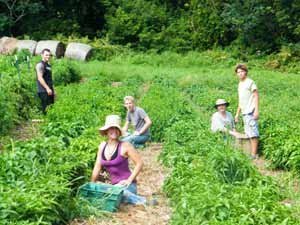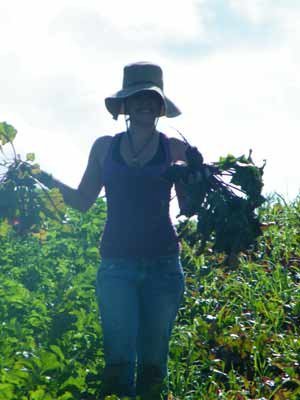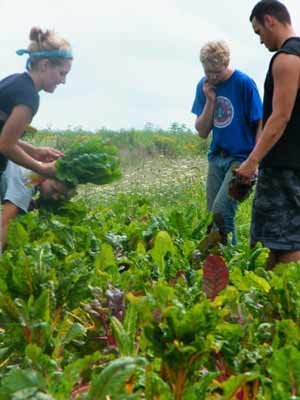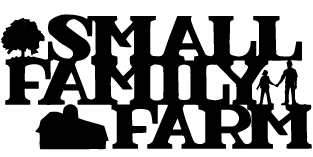Week 11, 2010
August Eleventh

You’ve got to eat it to save it. Maybe you’ve heard this saying that refers to saving endangered species of plants and animals. It’s true, if we want to preserve genetic diversity, we can actually help by cultivating these plants, raising these animals and spreading awareness about their existence through the marketing process. The native and wild species of the plants and animals can be left to spread naturally if their native habitats still exist, but if it wasn’t for niche marketers like us who have a strange interest in burpees golden beets, gnarly celeriac roots, and round lemon cucumbers, who would grow them? Would them still exist? Would anyone miss them?
I would! I imagine that there are some of you whose horizon’s are not being broadened by this CSA experience and when you open up the CSA box you are able to identify each item with nostalgic familiarity. Some of you might see some item like shallots, Asian cucumbers and kohlrabi and they are like an old friend you’re revisiting, but not a staple in your diet by any stretch of the imagination. I’m also imagining that there is at least a small handful of you who open up the CSA box and you think to yourself, “Oh, man, what am I going to do with this?” or “I wonder which one of my friends or relative will take this?”

I hope I’m wrong. I really, really, REALLY hope that each and every one of you were planning recipes for your red kale before you even got it in your box. This CSA experience was meant to help you broaden your horizons, it was meant to help you support a locally based food system and whether you were conscious of it or not, it was meant to help preserve genetic diversity. By your farmers purchasing celeriac root seeds, swiss chard seeds, and fennel seeds, we’re giving our money to those farmers who saved that seeds. Together, it takes the seed savers, the farmers and the eaters to preserve a genetic strain of plants. We need you to be the chef that takes the precious time to go out on a limb and use vegetables that you would not normally purchase from the grocery store.
The grocery stores stock vegetables that are bred to withstand long transportation, look visually appealing, and have a long shelf life. Long ago vegetable varieties with the most flavor, varieties that are less visually appealing and that are highly perishable became endangered species. If we embrace these veggies, learn to appreciate their flavors and cook with them in the kitchens we will in-directly be supporting the farmers who grow them. Often times, if the vegetables is prepared in the right way, it is easy for us to fall in love with it. Experimenting with new methods of cooking and trying new recipes will slowly take us outside of our comfort zones in the kitchen where we discover that new flavors in our lives can delight us in ways that we did not believe were possible. Go on, get experimental!
Sooo, What’s in the Box???

Shallots– These freshly harvested shallots are not even fully cured yet, but they can be enjoyed none the less. Keep them in a dry and warm place for up to two weeks, but then transfer to a cool, dark and dry place.
Lemon, Asian and/or Slicing Cucumbers– Lemon Cukes are the round, yellow/lime green prickly looking things. The Asian cucumbers are the gnarly, long and skinny cukes and hopefully you know how to identify the regular slicing cukes by now. The Cucumber harvests are beginning to wane.
Zucchini, Summer Squash and/or Patty Pan Squash– Squash harvest is waning quickly now! Another week or so, but then we’ll be out of summer squash. Enjoy it while it lasts!
Detroit Dark Red Beets– The beets seem to be getting larger as the bed matures. The greens were not as sightly this week. We cut the greens off of most of the beet bunches. Top the beets and they will store in a plastic bag in your fridge for over a month.
Green and/or Colored Peppers– Peppers are starting to come on now. The plants look so healthy and are really producing!
Hungarian Hot Wax and/or Jalapeno Peppers– Hot peppers to help you sweat out your toxins. Some like it hot, some not. The Hungarian Hot wax are also called banana peppers and the Jalapenos are the green, tear-drop shaped peppers.
Dill Weed– Dill to go so well with your cucumbers. If you can’t use all this dill, feel free to hang it upside down in your kitchen in a dry place. Store in a mason jar with a tight lid when fully closed.
Swiss Chard- Chard leaves for cooking with.
Sungold Cherry Tomatoes, Slicing Tomatoes, or Eggplant- We didn’t have enough of some of these items to go around and we wanted to start giving them because no tomatoes should ever go to waste. Sungold Cherry Tomatoes are ripe when they are bright orange. Some of the large cherry tomatoes are red. Slicing Tomatoes are mostly Heirlooms such as brandywine or cherokee Purple. The Cherokee Purple Tomatoes are ripe when they are soft and they are actually purple. Yum!
Recipes:
Swiss Chard and Tomato Frittata

